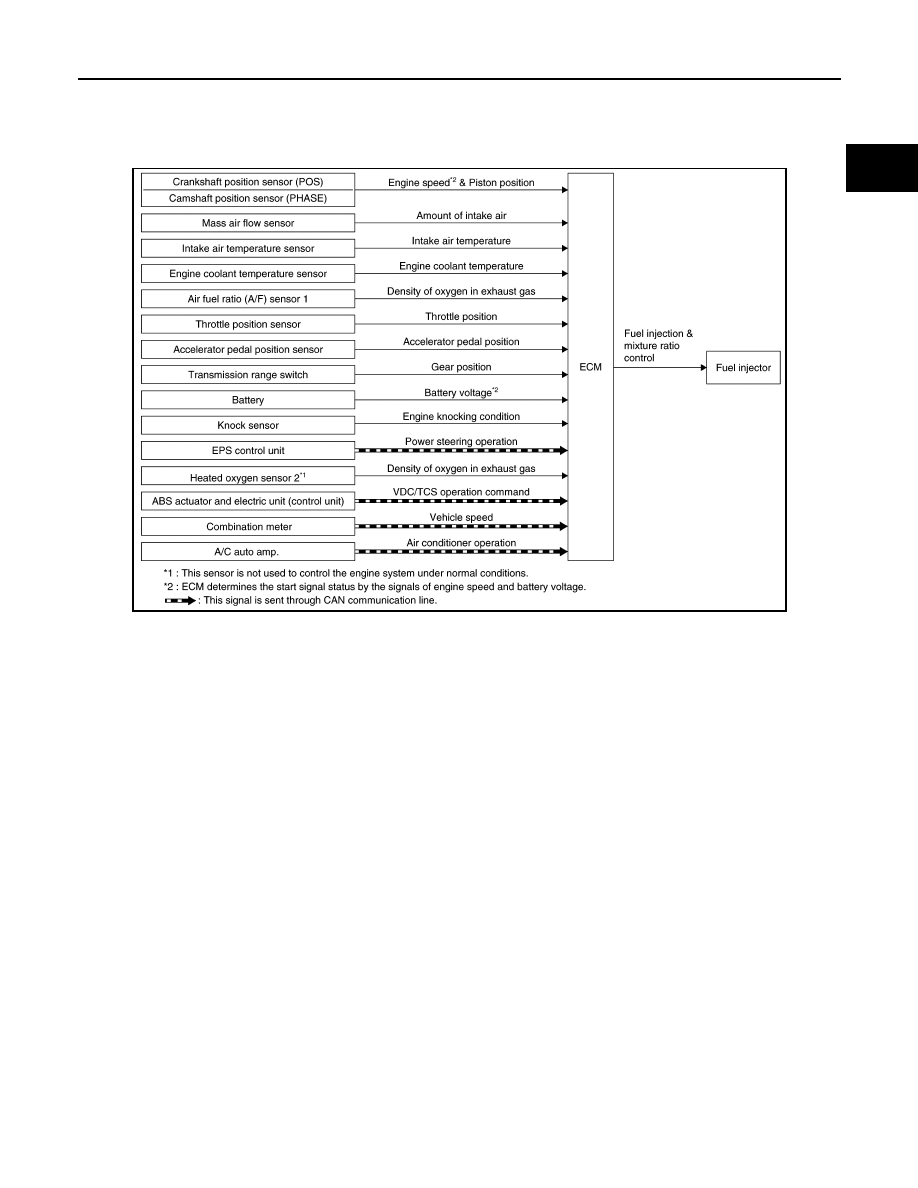содержание .. 831 832 833 834 ..
Nissan X-Trail 32. Manual - part 833

SYSTEM
EC-461
< SYSTEM DESCRIPTION >
[QR25DE]
C
D
E
F
G
H
I
J
K
L
M
A
EC
N
P
O
MULTIPORT FUEL INJECTION SYSTEM : System Description (with automatic air
conditioner)
INFOID:0000000010986232
SYSTEM DIAGRAM
SYSTEM DESCRIPTION
The amount of fuel injected from the fuel injector is determined by the ECM. The ECM controls the length of
time the valve remains open (injection pulse duration). The amount of fuel injected is a program value in the
ECM memory. The program value is preset by engine operating conditions. These conditions are determined
by input signals (for engine speed and intake air) from the crankshaft position sensor (POS), camshaft position
sensor (PHASE) and the mass air flow sensor.
VARIOUS FUEL INJECTION INCREASE/DECREASE COMPENSATION
In addition, the amount of fuel injected is compensated to improve engine performance under various operat-
ing conditions as listed below.
<Fuel increase>
• During warm-up
• When starting the engine
• During acceleration
• Hot-engine operation
• When selector lever is changed from N to D
• High-load, high-speed operation
<Fuel decrease>
• During deceleration
• During high engine speed operation
JPBIA5978GB